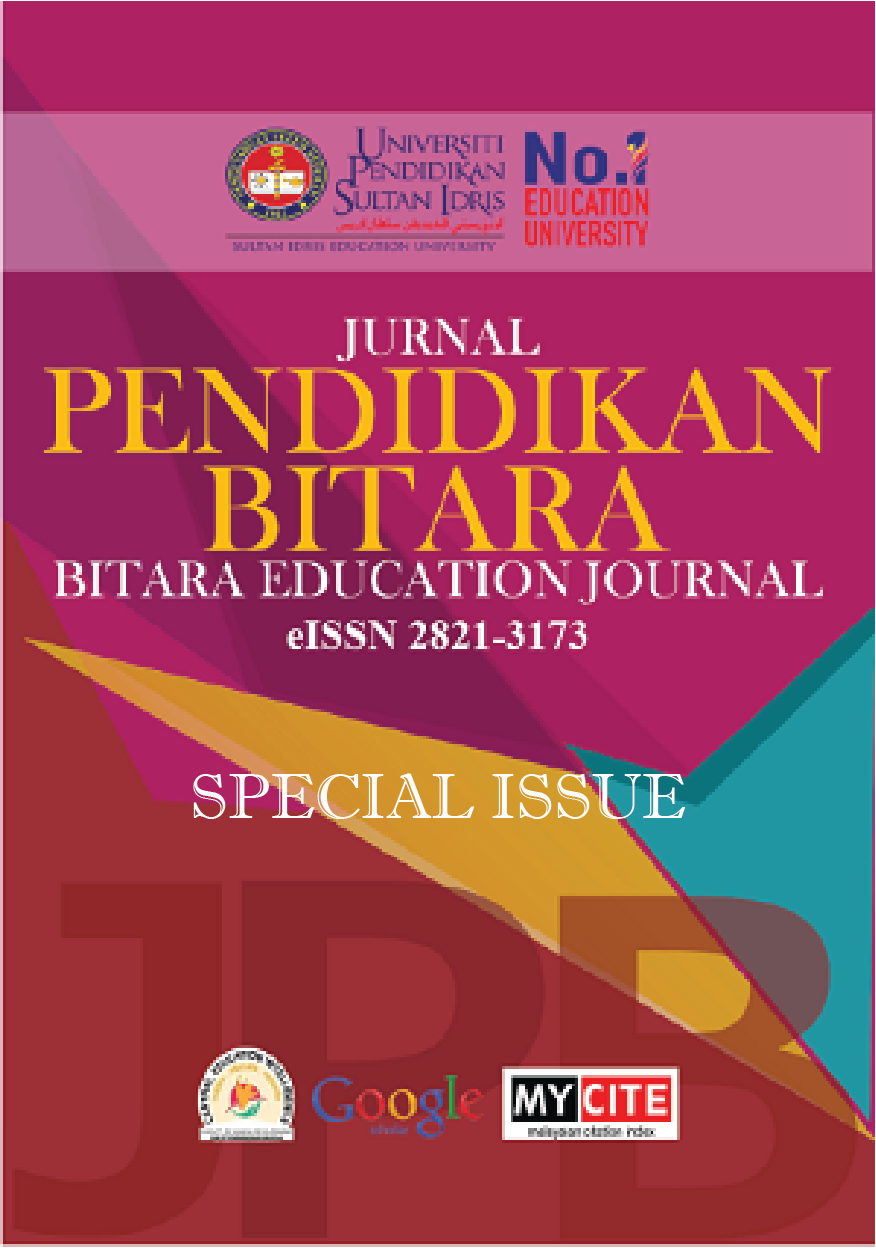Exploring the Dynamics of Inclusive Education: A Comparative Study of In-Service and Pre-Service preschool Teachers Using Index of Inclusion
DOI:
https://doi.org/10.37134/bitara.vol17.sp.15.2024Keywords:
Index of inclusion, preschool inclusive education, China, in-service teachers, pre-service teachersAbstract
During the 1980s, China's National Education Commission's Education Department initiated the "Learning in Regular Classroom" program, aimed at promoting inclusive education by integrating children with special educational needs into mainstream classrooms. This program laid the groundwork for inclusive education in China. Despite the gradual implementation of inclusive education across the country, its advancement in preschool settings has been relatively slow. This study focuses on preschool teachers, exploring the indicators of inclusive preschool education through data analysis from both in-service and pre-service teachers. We conducted a survey involving 30 in-service and 30 pre-service preschool teachers, utilizing a questionnaire to evaluate inclusive education indicators. The findings revealed that both groups had comparatively low scores in the aspects of inclusive culture and policy in preschool environments. Notable differences were observed among the groups regarding inclusive culture, policies, and practices. The study's results offer insights into the existing state and potential future of inclusive education in Chinese preschools, highlighting areas for improvement and further research.
Downloads
References
Ainscow, M., Booth, T., & Dyson, A. (2006). Inclusion and the standards agenda: Negotiating policy pressures in England. International Journal of Inclusive Education, 10(4-5), 295-308.
Booth, T., Ainscow, M., & Kingston, D. (2006). Index for Inclusion: Developing Play, Learning and Participation in Early Years and Childcare. Centre for Studies on Inclusive Education. Redland, Frenchay Campus, Coldharbour Lane, Bristol BS16 1QU, UK.
Chen Quanyin & Wei Yanrong (2017). Research on the current situation and dilemma of preschool integrated education in Taiwan. Modern Special Education, (08): 53-58.
Deng, M. & Guo, L. (2007) ‘Local special education administrators’ understanding of inclusive education in China.’ International Journal of Educational Development, 27, pp. 697–707.
Deng, M. & Holdsworth, J. C. (2007) ‘From unconscious to conscious inclusion: meeting special education needs in West China.’ Disability & Society, 22 (5), pp. 507–522.
Deng, M., & Poon‐McBrayer, K. F. (2012). Reforms and challenges in the era of inclusive education: the case of China. British journal of special education, 39(3), 117-122.
Feng, M C (2016). A good example of parent advocacy for rights in inclusive education in China. Frontiers of Law in China.11 (2). 323-338
Florian, L., & Black-Hawkins, K. (2011). Exploring inclusive pedagogy. British Educational Research Journal, 37(5), 813-828.
Grütter, J., L. Gasser, and T. Malti. (2017). “The Role of Cross-Group Friendship and Emotions in Adolescents’ perceptions Towards Inclusion.” Research in Developmental Disabilities 62: 137–147.
Huang ZhiCheng. (2004). Inclusive Education: A New Trend of International Education. Chinese Ethnic Education.
Lindsay, G. (2003). Inclusive education: A critical perspective. British Journal of Special Education, 30 (1), 3–12. https://doi.org/10.1111/1467-8527.00275
Li, Y., Wang, M., & Lei, J. (2016). A Review of Teachers' Sentiments and perceptions in Inclusive Education in China. Frontiers in Psychology, 7, 1576. https://doi.org/10.3389/fpsyg.2016.01576
Messiou, K. (2008). FOCUS ON PRACTICE: Encouraging children to think in more inclusive ways. British Journal of special education, 35(1), 26-32.
Norwich, B. (2008). Dilemmas of difference, inclusion and disability: International perspectives on placement. European Journal of Special Needs Education, 23(4), 287-304.
PengXiaGuang (2017). Overcoming difficulties to improve the Popularization of compulsory education for children and adolescents with disabilities. Special Education in China, (8): 10.
Štemberger, T., & Kiswarday, V. R. (2018). Attitude towards inclusive education: the perspective of Slovenian preschool and primary school teachers. European Journal of Special Needs Education, 33 (1), 47–58. https://doi.org/10.1080/08856257.2017.1297573
Tan, R., & Perren, S. (2021). Promoting peer interactions in an inclusive preschool in China: what are teachers’ strategies? International Journal of Inclusive Education, 0 (0), 1–17. https://doi.org/10.1080/13603116.2021.1879955
UNESCO. (1994). The Salamanca statement and framework for action on special needs education. https://policytoolbox.iiep.unesco.org/library/GIT844J9
Warnock, M., Norwich, B., & Terzi, L. (Eds.). (2010). Special Educational Needs: A New Look: Key Debates in Educational Policy. Bloomsbury Publishing. (pp. 4-32).
Yang, H. L. & Wang, H. B. (1994) ‘Special education in China.’ The Journal of Special Education, 28 (1), pp. 93–105.
Ye, L. Y. & Piao, Y. X. (1995) The Study of Special Education. Fuzhou: Fujian Education Press.Yang, H. L. & Wang, H. B. (1994) ‘Special education in China.’ The Journal of Special Education, 28 (1), pp. 93–105.
Ye, L. Y. & Piao, Y. X. (1995) The Study of Special Education. Fuzhou: Fujian Education Press.
Yang, H. L. & Wang, H. B. (1994) ‘Special education in China.’ The Journal of Special Education, 28 (1), pp. 93–105.
Ye, L. Y. & Piao, Y. X. (1995) The Study of Special Education. Fuzhou: Fujian Education Press.
Yell, M. L., Shriner, J. G., & Katsiyannis, A. (2006). Individuals with disabilities education improvement act of 2004 and IDEA regulations of 2006: Implications for teachers, administrators, and teacher trainers. Focus on exceptional children, 39(1), 1-24.
Zhu ZongShun (2011). History of special education (1). Beijing: Peking University Press.
Downloads
Published
Issue
Section
License
Copyright (c) 2024 Yang Yucui, Hui Min Low

This work is licensed under a Creative Commons Attribution-NonCommercial-ShareAlike 4.0 International License.





